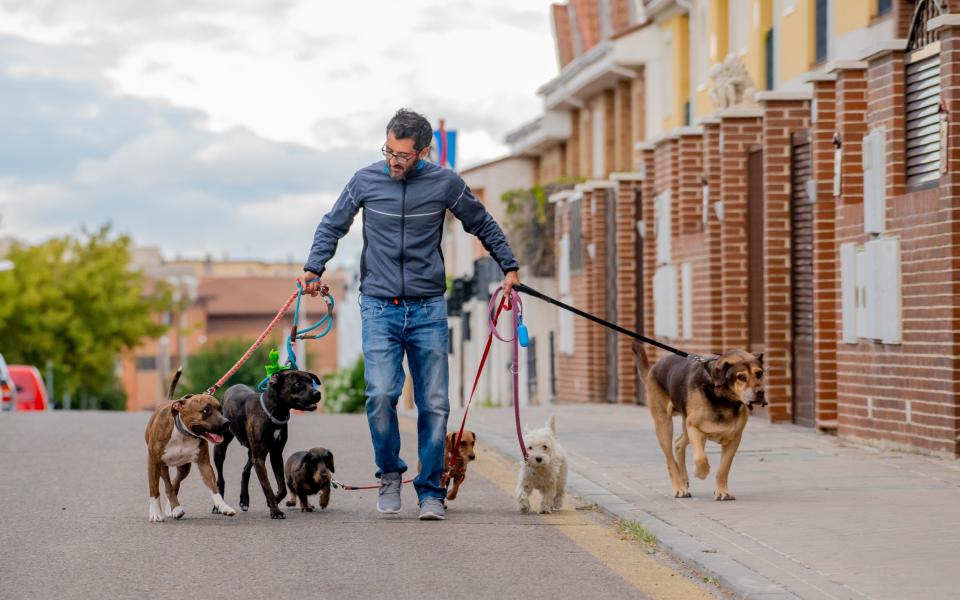The dogs most prone to getting cancer young

Mastiffs, Saint Bernards and Great Danes are the dog breeds most prone to getting cancer young, a study has found.
Cancer is the leading cause of death in adult dogs and although we know more about them than most other animals, scientists did not know which breeds were more susceptible to cancer than others.
Scientists at PetDx in La Jolla, California, a company which specialises in doing disease tests on animals, looked at the health records of almost 3,500 dogs with cancer.
The average age a dog was found to have cancer was 8.8 years old, data show, but the figures varied by breed. Mastiffs, for example, had a median age at diagnosis of five. Average age at diagnosis for Saint Bernards and Great Danes was six.
At the other end of the scale, the median age for a Bichon Frise was 11.5 years old, the oldest of any breed. The American Staffordshire Terrier and West Highland White Terrier were third and second oldest at diagnosis, respectively, with a median age of 10.5 and 10.8.
Size matters
Size, the data show, is the biggest contributing factor to a dog’s risk.
Median age at cancer diagnosis for dogs weighing 75kg or more was five years, compared to 11 years for dogs weighing 2.5 to 5kg, for example.
Male dogs tended to get cancer earlier than females and neutered dogs diagnosed later than intact dogs.
“Our findings, combined with findings from previous studies which established a long duration of the preclinical phase of cancer development in dogs, suggest that it might be reasonable to consider annual cancer screening starting two years prior to the median age at cancer diagnosis for dogs of similar breed or weight,” the researchers say.
“This logic would support a general recommendation to start cancer screening for all dogs at the age of seven, and as early as age four for breeds with a lower median age at cancer diagnosis, in order to increase the likelihood of early detection and treatment.”
The study is published in the journal PLOS ONE.

 Yahoo Finance
Yahoo Finance 